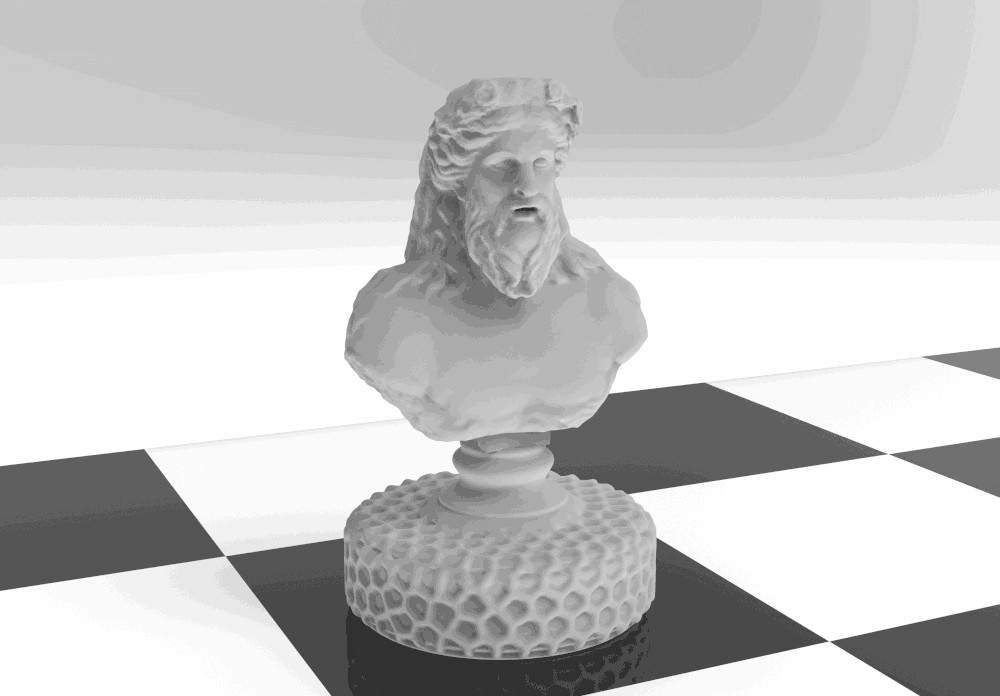MANN presents its chess inspired by the museum's masterpieces
The MANN National Archaeological Museum in Naples is launching a project dedicated to chess that combines research and technology. In 1932, the so-called"Venafro Chessmen," a group of eighteen worked pieces made from deer bone, were found, representing one of the oldest examples of the game in Europe. The finds, currently on display at the Venafro Archaeological Museum, were kept at the time of their discovery at the Naples Museum, then directed by archaeologist Amedeo Maiuri. Initially believed to be from the Roman period, the pieces were later attributed, on the basis of radio dating and comparisons with other similar items, to the “Islamic” type (10th-11th centuries).
From this evidence came the project conceived by Ludovico Solima (University of Campania “Luigi Vanvitelli”). Instead, the realization is due to the company 3DnA Srl, a European leader in design and printing: engineers digitized the museum artifacts with sophisticated activities (Reverse Engineering) that, by means of laser scanning and subsequent reprocessing of millions of points for each individual model, made it possible to create highly accurate mathematical models; the company’s designers subsequently modeled the bases of the scanned works with dedicated software to create the models of the MANN chess pieces. To bring the digitized prototypes “to life,” 3DnA then adopted advanced 3D Printing technologies to ensure fidelity of reproduction and attention to detail. The chess sets are made in two different formats, the Standard (King’s height: 68mm) and the Deluxe edition (height 83mm).
From December 21, they will be available for purchase on Etsy.com and at selected retail outlets.
“From the fascinating history of the ancient chess of Venafro to the most advanced 3D technology, this is how a scientific and cultural project is transformed into merchandising of excellence, the path that the MANN has taken for the enhancement of its heritage. The Museum’s chess is not only a splendid object, an ambassador to the world of our iconic works,” said MANN Director Paolo Giulierini. “With the chess associations we want to plan themed events and engage visitors to the institute. The partnership between the museum and the 3DnA company, which began a few years ago, finds its further moment of development with Chess at the MANN: an absolutely unprecedented project in the world. For the first time, in fact, a museum is making chess pieces through a reinterpretation of its own works, which in this new guise thus become a powerful vehicle for the image of MANN and its ability to combine three fundamental elements in the cultural sphere in an ever original way: conservation, innovation and creativity,” Ludovico Solima commented.
“For 3DnA it is a source of pride to have been able to contribute, through the creation of the MANN Chess set, whose figures are inspired by some of the most beautiful Roman sculptures housed at the MANN in Naples, to the promotion, digital preservation and dissemination of these masterpieces of art. The most sophisticated 3D printing technologies and art come together giving life to what is considered not only the most popular game of the mind in the world, with a history of 1300 years, but also a sport, an art form, a science allowing to convey and disseminate the artistic and historical cultural content and the very image of the MANN to wider audiences going far beyond the play and recreational aspect. Happy gaming to all fans,” concluded Alessandro Manzo, general manager of the 3DnA company.
Chess will be presented to the public on Wednesday, Dec. 21 at 4 p.m. in the Hercules Farnese Hall. Angelo Martorelli (federal adviser-Italian Chess Federation), Salvatore Isoldo (president of the Campania Regional Committee- Chess Federation), Francesco Roviello (president of the Naples Chess Society) and Mariagrazia de Rosa (Italian champion) will play with the audience involved.
 |
| MANN presents its chess inspired by the museum's masterpieces |
Warning: the translation into English of the original Italian article was created using automatic tools. We undertake to review all articles, but we do not guarantee the total absence of inaccuracies in the translation due to the program. You can find the original by clicking on the ITA button. If you find any mistake,please contact us.





























